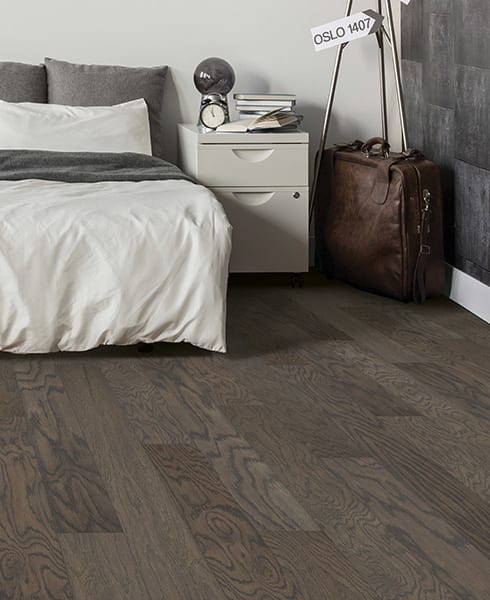Solid vs. engineered hardwood flooring installation
When you step into a home and feel the warmth and beauty of a hardwood floor beneath your feet, you might not immediately consider the type of wood that went into that installation. However, the distinction between solid and engineered hardwood flooring can have a significant impact on both the aesthetics and the functionality of your space. In this guide, we'll delve into the differences between these two popular flooring options and shed light on the solid and engineered hardwood flooring installation processes.
What is solid wood flooring?
Solid wood flooring is, as its name suggests, made up of solid pieces of wood. Each plank is crafted from a single piece of timber. Its beauty lies in its natural imperfections, grains, and knots. Given its natural composition, solid hardwood flooring can last for generations when properly maintained.
Pros:
Pros:
- Long-lasting and can be refinished multiple times.
- Offers a timeless, natural look that adds to property value.
- Suitable for most areas of the home.
- Sensitive to moisture and temperature changes.
- Can warp or cup if not installed and maintained properly.
- Generally pricier than engineered wood flooring.
Questions?
We're here to help
What is engineered wood flooring?
Engineered hardwood flooring is composed of multiple layers of wood veneers, with the topmost layer showcasing the desired wood species and grain. This multilayer construction imparts engineered wood with added stability, making it less susceptible to changes in humidity and temperature.
Pros:
Pros:
- Resists warping and expansion better than solid wood.
- It can be installed in areas where solid wood may not be suitable, like basements.
- Often more cost-effective than solid wood.
- Limited to a few refinishing processes due to the thin top layer.
- It's not as long-lasting as solid wood in some cases.
Installing solid hardwood flooring
Solid wood flooring requires a more meticulous installation process due to its environmental sensitivity. Key steps include:
- Acclimatization: Before installation, solid wood planks should be left in the room where they'll be installed for several days. This helps them adapt to the room’s humidity and temperature.
- Subfloor preparation: The subfloor must be clean, dry, and level. Any irregularities can lead to issues post-installation.
- Installation method: Solid wood can be nailed, stapled, or glued. Depending on the method and room's conditions, an underlayment may be required.
- Expansion gaps: Wood expands and contracts. Hence, small gaps should be left between the flooring and walls to accommodate this natural movement.

Installing engineered wood flooring
Engineered hardwood flooring offers more versatility in its installation methods thanks to its stable construction. Key steps include:
- Subfloor preparation: As with solid wood, the subfloor needs to be clean, dry, and level.
- Installation methods: Engineered wood can be floated, glued, stapled, or nailed down. Floating installations, where planks are attached to each other but not the subfloor, are popular due to their ease and speed.
- Underlayment: Depending on the method chosen, an underlayment may be necessary. It helps with sound insulation and moisture protection.
Contact us for your hardwood flooring installation needs
The choice between solid and engineered hardwood flooring hinges on your specific needs, budget, and desired aesthetic. Both options offer unique benefits and have specific installation considerations. For personalized advice and expert hardwood flooring installation, visit Dilley's Wood Flooring and Supplies and let our specialists guide you to the perfect choice for your home. Our showroom in Southbury, CT, serves Litchfield County, CT, Fairfield County, CT, Middlesex County, CT, New Haven County, CT, and Hartford County, CT.





